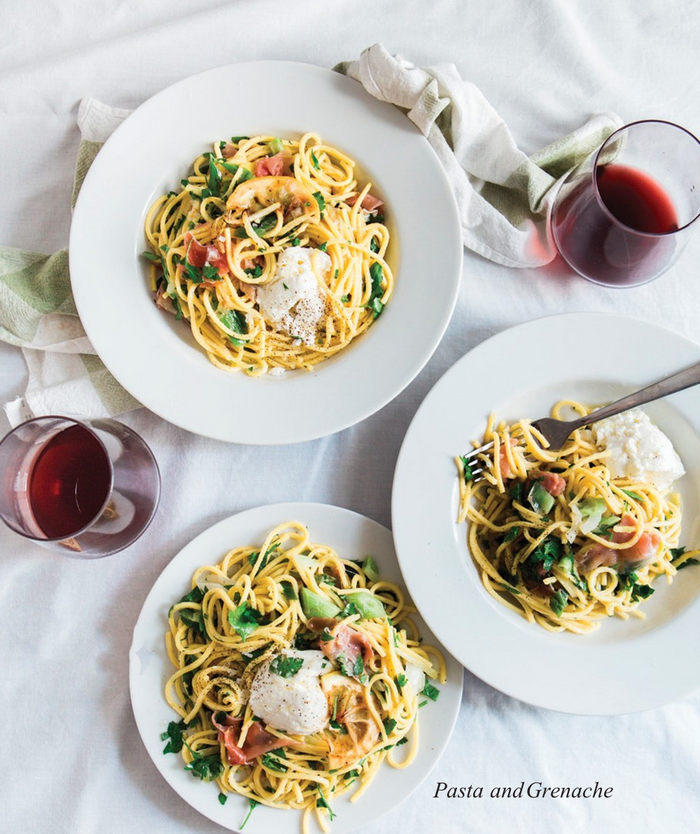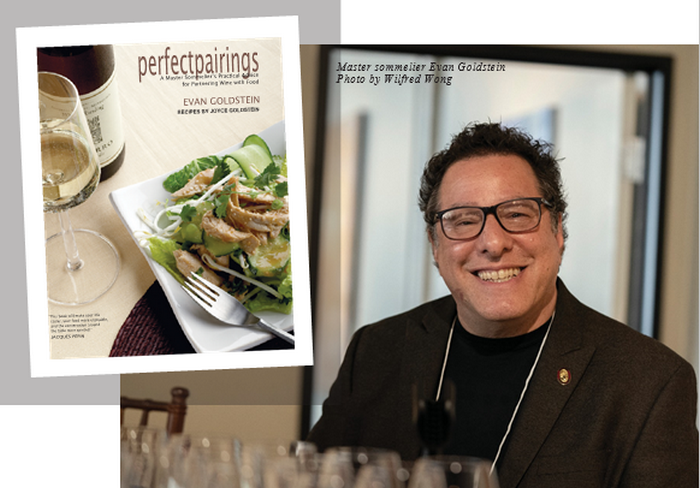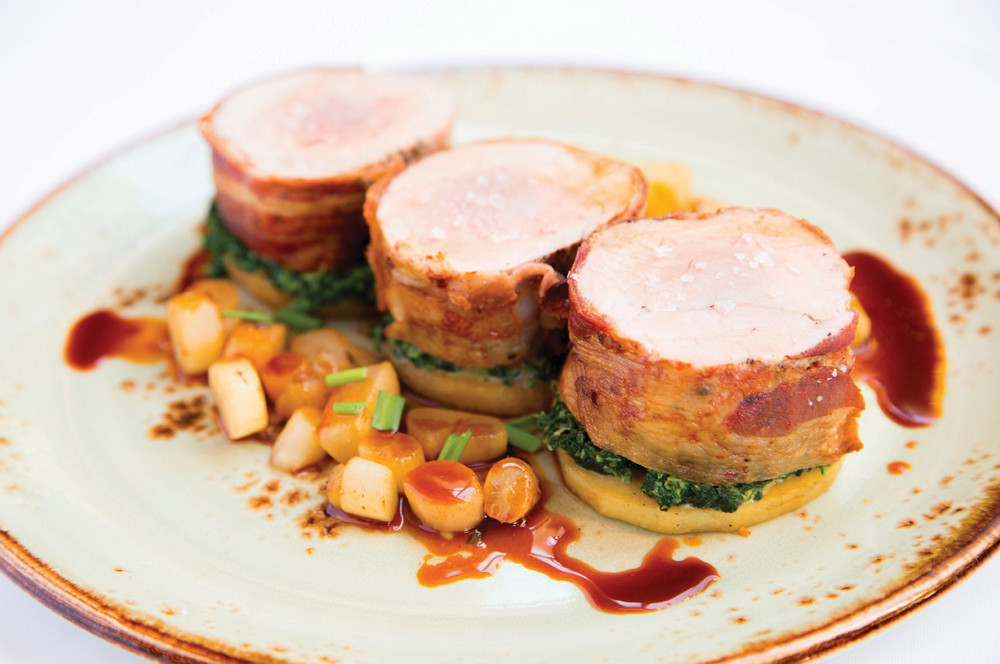While serving an elegant Chardonnay with baked fish or a full-bodied Cabernet Sauvignon with a juicy steak are safe bets for wine pairings, the recent explosion of fresh styles of cuisine has created exciting opportunities for wine and food lovers to break tradition and mix and match more flavors than ever before.
Generally, perfect pairing moments start by deciding if the dish or the wine will play the leading role. Since most people decide what they want to eat before ordering or serving wine, food and ingredients are often the main focus.

The brisk flavors of sparkling wine are an ideal match for a dozen raw oysters but a simple squeeze of fresh citrus
can magically elevate the flavor profile. The salty brine is sensational paired with crisp, clean sips of chilled Chenin Blanc, an aromatic white wine that has made a recent comeback thanks to the small bottlings produced by local wineries like Chappellet, Lang & Reed, and Ballentine Vineyards. Another adventurous seafood pairing would be to highlight the flavors of yellowtail tuna crudo, served with toasted bread and fresh herbs, with the zesty virtuoso of Shafer Vineyards Albarino, a white Spanish grape variety, instead of reaching for a Sauvignon Blanc. For a fanciful alternative to light red wine, a classy style of dry pink wine like the Calmére Rosé of Pinot Noir can work wonders with paper-thin slices of beef carpaccio served with capers and mixed greens. With heavier meats which are wood-grilled, smoked, or served with a distinctive barbeque sauce, proprietary red blends are a reliable option.

Matching wine with food ingredients starts with identifying which grapes compose the blend, the country of origin and producer, then using the five building blocks based on the level of sugar, acid, alcohol, tannins, and oak to access how the wine will match with the dish. In the case of classic, off-dry Stony Hill White Riesling from the cool climate growing area of Carneros, it’s about matching the levels of acidity and natural sweetness with salty foods. With red wines, it’s essential to make sure the tannins and oak are balanced, so they don’t overshadow the flavors. On the opposite end of the spectrum, it would be “dumbing down” the food to allow the unique characteristics of high-profile wines from the old world, reserve vintages, or rare hillside selections to shine.

“Once you have those points deter- mined, you can figure out how the wine will match with the food,” said high-profile sommelier, author, and wine educator Evan Goldstein. His book, Perfect Pairings: A Master Sommelier’s Practical Advice for Partnering Wine and Food, has become a quintessential read for aspiring wine professionals, chefs, and consumers since its publication in 2006 by University of California Press.
To provide a fresh perspective on options, Goldstein said he likes to steer people away from the classic phrase “what grows together goes together.” Therefore, instead of relying on the old beliefs that poultry tastes best with white wine or pairing pasta with Sangiovese, he suggests serving intriguing wines that share a commonality of structure and flavor for pairings. In these cases, that could mean an earthy style of Pinot Noir with the poultry or a full-bodied Grenache with the pasta.
As the eating habits of consumers expanded over the past decade, subtle flavors are being replaced by a sense of adventure. For that reason, Goldstein said people want more boldness in their food, which has opened up the floodgate for a new wave of complex red and white blends that can match to more heightened personalities in these dishes. Equally important is the fact that it’s not about the brand or perceived value of the wine, but how well it works with food.
To elevate the bountiful flavors in each dish served at Mustards Grill in Yountville, director James Dick features more local, boutique, and esoteric brands on his wine list instead of big-name producers. The high-quality of these low-production wines allow Dick to do a brilliant array of pairings that showcase the unique flavors in each dish. Delicious examples include the energetic, sparkling effervescence of Paula Kornell Blanc de Noirs matched with crispy calamari; the charred and smoky notes of their signature Mongolian Pork Chops lifted with the rich, ripe and gracious flavors of the Plumpjack Syrah; and special Cabernet Franc or Merlot offerings, which provide the right amount of acidity to cut the fattiness of the grilled Hanger Steak. “Some guests need guidance,” said Dick. “So, my job is to make their experience matter and showcase the flavors that come from the kitchen.”

Tonya Pitts, sommelier at One Market in San Francisco, is known for designing spe- cialty pairings for dynamic dishes prepared by Chef Mark Dommen, the original chef at COPIA’s Julia’s Kitchen, a collaboration between Julia Child and wine legend, Robert Mondavi. “Wine fits into my life as memories. Every time I taste wines, I am immediately pairing food theoretically in my head,” she laughed. To provide guests with stimulating, out of body experiences with food and wine pairings from the cellar, Pitts often serves early vintage selections of the Robert Mondavi Reserve Cabernet Sauvignon, from the 1980s and 1990s. In staying with the family tradition, she recently teamed up with Tim Mondavi to present an avant-garde pairing which featured a stunning Ahi Tuna Tartare with avocado, radish, ponzu, and cilantro, matched with the expressive mountain flavors of Mondavi’s Continuum 2016, a blend of Bordeaux grapes grown at the family estate vineyard on Pritchard Hill. “There was fat, acid, and earth on the palate, and it worked wonderfully with the dish,” said Pitts.
If one is dining out in a fine restaurant or cooking at home, finding the perfect harmony between wine and food can seem like a complex undertaking. Whether fol- lowing conventional guidelines or stepping out of the mold, the optimal result ultimately relies on each individual’s palate and preference; a transcendent experience for one may not be as peerless to another. The universal rule of food and wine pairing is simple- that it’s enjoyable, offers new discoveries and a sense of adventure.
ABOUT THE AUTHOR:
Christopher Sawyer is an internationally renowned sommelier, wine judge, consultant, wine journalist, and public speaker. Voted Best Sommelier of Sonoma County 2020 by Bohemian Magazine for the seventh consecutive year, he is also a recipient of many more prestigious awards and industry honors. To learn more about Chris and to follow his wine adventures, visit: www.sawyersomm.com

